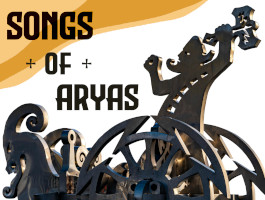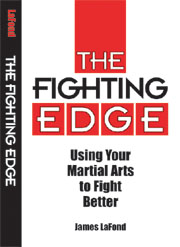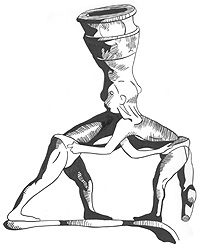For the past four years I have been reading rough drafts of chapters from David’s memoir: Hands of Stone. It is a personal look from within: a doctor’s eye view of learning and practicing the dying art of modern medicine. He was a history teacher before he went into medicine, has been a musician, and is a lifetime martial artist. I expected the combat metaphors and the occasional poetry and lyrics. What surprised me was that this modern doctor with a Christian upbringing and scientific education also writes about animal totems. Yep, this is postmodern renaissance [maybe the last one we get] literature.
I have read the first 11 chapters of Hands of Stone. He usually sends me second drafts. Chapter 19 he sent me as a rough draft, I think because of the circumstance he wrote it under, just after a conversation we had when he was between shifts. For any of you who suffer from writer’s block let David stand as an example of productivity under duress. I can brag about a huge word count mostly because I am a fulltime writer. David is a fulltime physician. For those who do not know: physician residents work 150 hours per week, out of the 168 hours allocated by God. Once they have made it, they are still working twice as many hours—and sometimes three times as many—as a fulltime hourly employee.
Chapter 19, The Ecstasy of Defeat is a chilling chronicle of the ‘pending demise’ of the medical profession from the trenches. It focuses on a colleague who got out of medicine to sell houses because of being sued for ‘pain’. David makes the salient point that pain—not injury, illness, debility, death—is what will do his profession in. He has to be very careful about his statements since he and every other doctor in the U.S. are in the crosshairs of ambulance chasing lawyers.
Let me digress to a conversation I had with David in 2010 when I was writing Of The Sunset World. I had written a battle in which a protagonist suffered terrible lacerations and punctures to his pectoral muscles. I first interviewed David—an orthopedic surgeon who has spent more time putting humans back together in emergency rooms than you have probably spent doing whatever it is you do for a living—as to how a doctor with a basic surgery kit would repair these injuries. It was like listening to an improbably intelligent boxer describing punching mechanics. I then asked him what the limitations would be after this ambulatory surgery. Could the guy walk, run, fight?
“It’s all a matter of pain tolerance. Yeah, you can rip it and retard the recovery. But a caveman with a boxer’s or stick-fighter’s level of pain tolerance could run a postoperative marathon. Of course, the typical modern American would be in bed for a year whining for more drugs, and retard their recovery on a sedentary basis as much as our hypothetical caveman would by running through the woods killing people. Pain is a mystery that Toaist monks, Zen masters, and freagin’ maniacs have as much mastery over as modern medicine.”
David went on to educate me about pain being a place where physiology and psychology intertwine, a haunted borderland stalked by faith-healers, drug dealers, bartenders, lawyers, and pain management physicians.
Pain has risen, in our sedentary feminized culture, far above its natural status as a warning system, and has become an increasingly potent affliction against which the modern entitlement-minded perfection-expectant couch-potato has no immunity. Ten years earlier I had read a medical journal in which a study that compared Vietnamese patients to American patients found a huge difference in the pain medication necessary for surgery, and a better rate of recovery by the Vietnamese. My opinion is that we live in a pain-conquered culture, reflected in rampant drug-addiction.
Having suffered a multitude of injuries I am often consulted as a ‘free expert’ by coworkers, relatives and friends who believe themselves to be injured or sick based on some pain they are experiencing [usually back pain at work]. To a person they refuse to take any step beyond passive drug ingestion, and panic along a rising trajectory every time a stronger drug fails to relieve their pain. I always demonstrate preventative methods and therapeutic exercises, which are never used. After a while, once the whining continues long enough, I either walk away, or say, “If any over-the-counter pain medication can have a positive effect on your range of motion than you are pre-injury.” If I were a doctor and said such a thing I would lose my practice.
As I sit writing this morning I am experiencing pain in 2 organs, 4 muscles, 1 bone, 1 gland, and 2 joints. The joint and bone pain are at what I would describe as ‘panic level’ for most people as the pain throbs and radiates throughout my body. I have carried all three of these pains for years, one for over a decade. I will be getting hit with a stick in 4 hours. To suppress this pain would cost a fortune and destroy my liver. I can say this; can speak against our Mommy Culture Narcostate orthodoxy, where pain is the ‘great disease’, only because I am not a doctor with my professional head in the legal noose.
Throughout the Ecstasy of Defeat David supplies painfully dissident insights at length: defining the legal system as ‘the vengeance of mediocrity’; and attacking both ends of the medicine-as-God-complex with ‘you can’t make it the way God did’ and ‘you are not a flat tire that is easily fixed.’ The theme is that pain and bitterness and the parasitic legal class that feeds off of them have become a cultural force that has set in motion the demise of medicine.
When David gets this thing finished it needs to be published.











